#international indigenous peoples day
Text
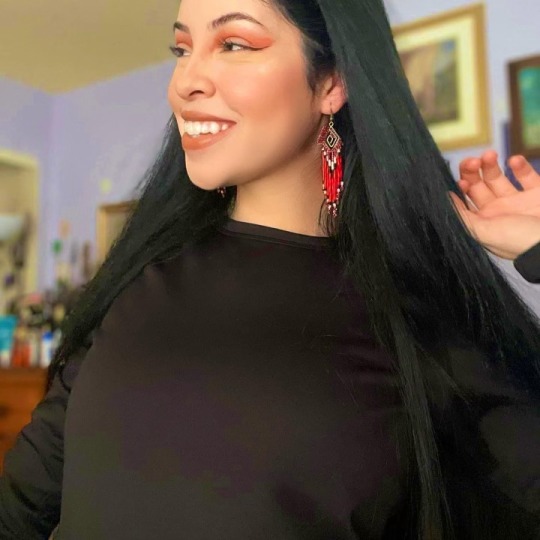

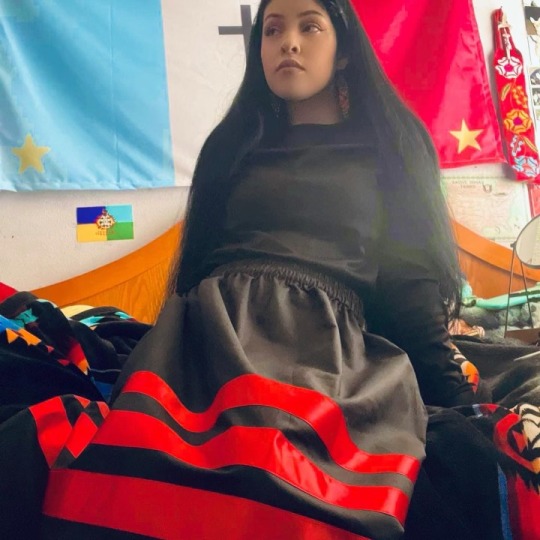

Happy International Day of Indigenous Peoples!🪶♥️
#mine#yoeme#purhepecha#representing#yaqui#purepecha#indigena#international indigenous peoples day#ribbon skirt#youtuber#vlogger#ootd#ndn#indigenous#native pride#native american#first nations#california#yaquesita#for you
87 notes
·
View notes
Text

Happy International Day of the World’s Indigenous Peoples 🖤💛❤️
36 notes
·
View notes
Text
For #CrowAndRavenAppreciationDay:

Raven Hat, Tlingit (Pacific NW Coast), early-mid 1800s. Carnegie Museum of Natural History display.
“RAVEN HAT
Tlingit, early to mid 1800s
This raven crest hat probably belonged to a clan that owned the right to display Raven in this guise accompanied by story and song. The basketry rings may refer to the number of times that the hat was publicly displayed and validated as a crest object. Since the rings are woven as a single piece, at some point the number was set and no more were added.
Unidentified wood, Sitka spruce (Picea sitchensis), mineral paints, abalone shell (Haliotis sp.), commercial cotton, unidentified adhesive, laundry blueing, tanned hide, iron
3178-60 & 3178-1236”
“Raven and Eagle
Tlingit society is divided into two halves, or moieties, named the Ravens and the Eagles. (Note: it’s more broadly Raven/Crow and Eagle/Wolf as there are regional variants)
Every Tlingit person belongs to one side or the other. Within each moiety, there are many clans.
When introducing themselves, Tlingit individuals identify their moiety and clan. We're very clanish people. We are proud of who we are, like I'm a Raven, says Isabella Brady (1992).
Other Northwest Coast cultures have similar and equally complex social structures, some with two divisions and some with more. Each clan has rights to its own designs, songs, stories, and more.”
“Raven also moves between the creature and human worlds, bestowing gifts yet playing tricks on humans in an extensive series of stories. He has a dual personality. As a culture hero and transformer, Raven is credited with shaping much of our world. As a trickster, he is driven to outlandish adventures by his selfishness, greed, and hunger.”
#Tlingit#Pacific Northwest Coast peoples#Native American art#First Nations art#Indigenous art#animal holiday#International Crow and Raven Appreciation Day#raven#crow#eagle#wolf#moieties#Tlingit culture#wood carving#hat#Carnegie Museum of Natural History#19th century art#museum visit#interpretive signage#animals in art
53 notes
·
View notes
Text
International Day of the World's Indigenous Peoples
Today is the International Day of the World's Indigenous Peoples, a day to celebrate Indigenous Peoples and their knowledge, culture and traditions.
It is also a day to raise awareness of their needs and to take steps toward promoting and protecting their rights.
Indigenous peoples live all around the world and are numbering (at least) 300-500 million, which is about 6 percent of the global population.
They speak an majority of the world's estimated 7,000 languages. Many of these language are endangered. (Meaning, that is at risk of disappearing as its speakers die out or shift to speaking other languages.)
Many Indigenous Peoples share common problems and needs. Some of these issues are poverty, health issues, linguistic & cultural preservation, land rights, discrimination & human rights violations.
Let today be a day to maybe learn a little more about the great diversity of the people on our planet.
11 notes
·
View notes
Photo

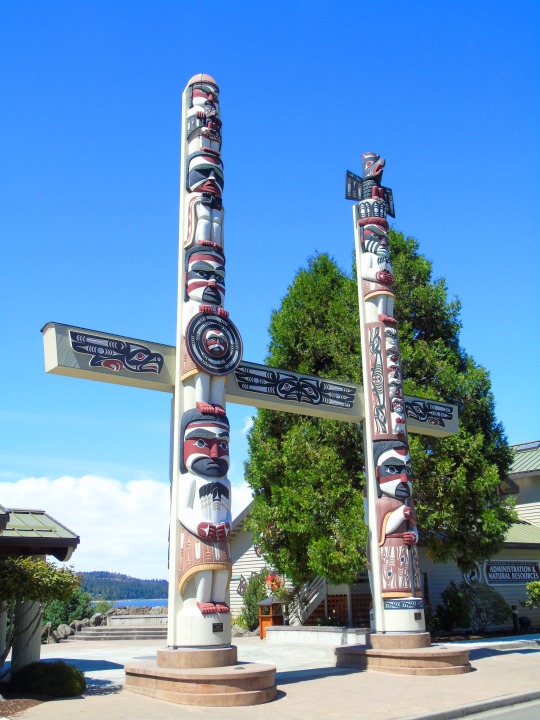


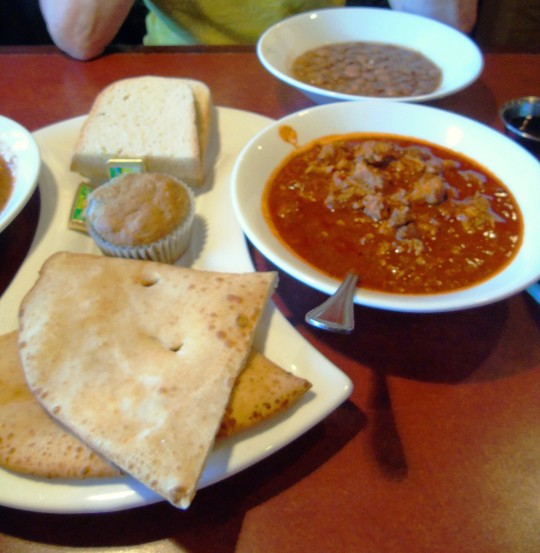


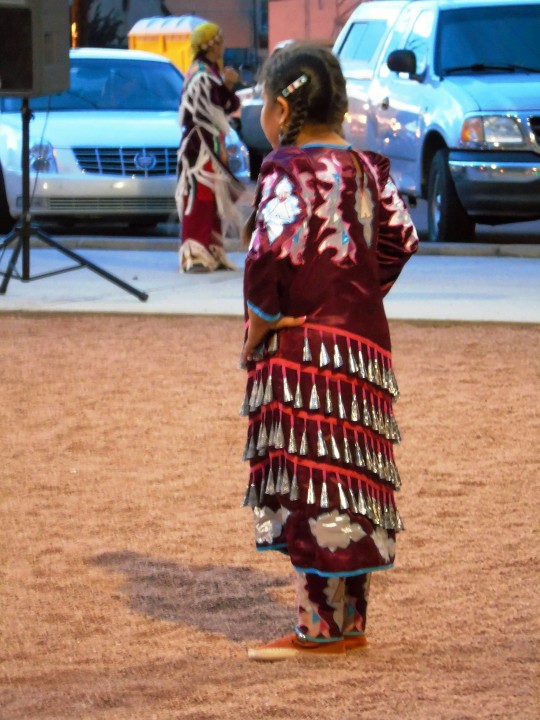
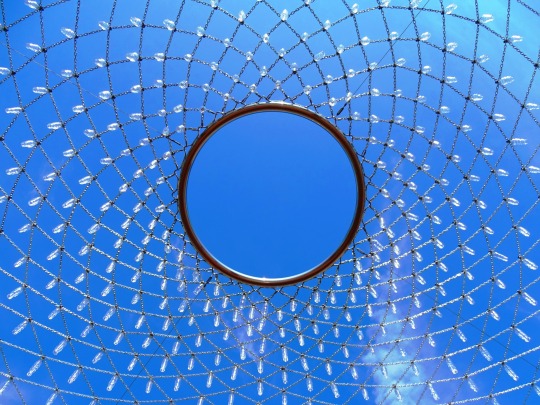

International Day of The World's Indigenous People
The International Day of the World’s Indigenous People on August 9 pays tribute to the indigenous communities of the world. The latest data reveals that there are about 370 to 500 million indigenous people living in 90 countries. These communities are noted to have their own unique set of languages, traditions, cultures, and governing systems. For many indigenous groups, the systems that their ancestors have followed for centuries have stood the test of time by serving them with positive outcomes to date. Many indigenous people’s special bond and connection with nature have also led to the protection of the general environment. However, on the other side, several indigenous communities face difficulties due to a central government’s covert and overt attempts to control their lives. This has led to indigenous people’s rights violations where they would have otherwise ensured peaceful and harmonious lives for them.
History of International Day of The World's Indigenous People
The first International Day of the World’s Indigenous People was officially celebrated in August 1995. The day had been brought into existence when the 49/214 resolution was passed by the U.N. General Assembly on December 23, 1994. August 9 was chosen as the commemorative date because that was when the first meeting of the U.N. Working Group on Indigenous Populations of the Sub-Commission on the Promotion and Protection of Human Rights was held. Every year, the day is honored by governments and organizations holding education forums and conferences to meet and discuss the social issues faced by indigenous groups worldwide. People are also given information on any ongoing and/or upcoming activities and projects that are being undertaken to help the target communities. Every year, the theme changes to shed light on a pressing topic, and the theme for the year 2021 was ‘Leaving no one behind: Indigenous peoples and the call for a new social contract.’
The social contract theme is a call for accountability in the general populations’ interaction with the indigenous communities and their resources. Over the years, many indigenous groups have found themselves to be on a disadvantageous terrain in the face of urban development projects that have destroyed and denigrated their lands and territories. The central governments and builders involved in such projects never sought permission from or even spoke with the indigenous communities before they took the developmental steps. Organizations and agencies like the U.N. and UNESCO have made efforts for constitutional/legislative reforms for dominant indigenous groups. Yet, the efforts must be focussed on bringing everyone together in the cause, leaving none behind.
International Day of The World's Indigenous People timeline
1982 First U.N. Meeting on Indigenous People
The U.N. holds the first meeting on indigenous people by forming the U.N. Working Group on Indigenous Populations of the Sub-Commission on the Promotion and Protection of Human Rights.
1995 International Day of the World’s Indigenous People
The first International Day of the World’s Indigenous People is celebrated by the U.N. General Assembly.
2005 - 2015 Indigenous People’s Decade
The U.N. proclaims 2005 to 2015 to be the ‘Decade of Action and Dignity’ for the indigenous communities.
2019 Indigenous Languages Year
After a startling 2016 report on the danger of more than 2,000 indigenous becoming extinct, the U.N. declares 2019 to be the International Year of Indigenous Languages in order to create awareness.
How To Observe International Day of the World’s Indigenous People
Learn about indigenous groups
Learn an indigenous language
Stand by indigenous groups
History related to indigenous people is always interesting to read and learn about. They have their own sets of beliefs, customs, languages, and cultures. Their daily lifestyles are also often connected with nature, be it animals, trees, certain plants, or lakes/rivers.
The U.N. declared the years 2022 to 2032 the decade for indigenous languages. The goal is to bring to attention the dying languages, since most of them are not taught in schools or are used by the general public. Losing a language is losing an important facet of the history and culture of a people.
The best way to celebrate this day and the rest of the year is by vowing to stand by indigenous groups. The indigenous people have the right to freely choose however they wish to live, much like any other living being on this planet. Protecting their rights also in turn protects your rights in the long run.
5 Interesting Facts About Indigenous People
80% of the world’s biodiversity
4,000 indigenous languages
High poverty rates
Short life spans
Leaders in protecting the environment
Around 80% of the world’s biodiversity is in places where indigenous groups are living.
The 5,000 indigenous communities in the world are credited with having about 4,000 languages.
While the indigenous communities account for only 5% of the world’s population, they make up 15% of the world population that is living in poverty.
Indigenous communities, due to a lack of awareness, have shorter life spans as they die of preventable diseases like malaria and H.I.V.
Studies have shown that the fauna and flora, and biodiversity thrive and flourish where indigenous people reside.
Why International Day of the World’s Indigenous People is Important
It’s a celebration of indigenous people
It’s a celebration of indigenous languages
It’s a celebration of the freedom to live
Indigenous people form an essential and crucial part of not only our planet’s history, but also how human beings have come to make systems to lead fruitful lives. The indigenous people’s cultures, customs, and traditions are interesting to learn about for their uniqueness and for what they teach us about the universe and the bigger picture.
Language, at its core, builds the identity of a people. The involvement of the different phonetics, grammar rules, and formal/informal styles can tell one a lot about where a community has come from, and how their history has shaped them. The same is the case with indigenous languages. The problem lies in their endangerment, and this is why we must strive to preserve them.
The freedom to practice our rights on a piece of land that has shaped our communities for centuries should not be taken away from anyone. The freedom to practice our customs, traditions, and general lifestyles is another important aspect of living a worthwhile life. For these very reasons and many others, we should join indigenous people in their right to live and flourish however they like.
Source
#Wabanki Canoe#International Day of the World’s Indigenous People#USA#9 August#original photography#native american#Washington#Main#travel#vacation#Canada#Founding Fathers by Dale Faulstich#Jamestown S'Klallam Tribe#Anishinaabe Scout by Hamilton MacCarthy#Ottawa#Vancouver#Klahowya Village#Montezuma Castle National Monument#native american food#Navajo#Diné#El Castillo#Chichén Itzá#Mexico#Lower Fort Garry National Historic Site of Canada#The Gather-Ring by Manuel Báez and Charlynne Lafontaine#InternationalDayofTheWorld'sIndigenousPeople
98 notes
·
View notes
Text
Statement by the High Representative on behalf of the European Union.
On the International Day of the World’s Indigenous Peoples (9 August 2023), the European Union reiterates its firm and continued commitment to the respect, protection and fulfilment of indigenous peoples’ rights as set out in international human rights law and in the UN Declaration on the Rights of Indigenous Peoples.
As this year the International Day is dedicated to “Indigenous Youth as Agents of Change for Self-determination”, we pay in particular tribute to the voices and agency of indigenous youth. Indigenous youth stand at the frontline of some of the most pressing crises humanity faces today, such as the loss of biodiversity and climate change. At the same time, they lack avenues for full participation in political and public life, to address challenges such as loss of territories, livelihoods and resources, or to advocate for self-determination and defend their rights. The EU continues to promote the participation of indigenous leaders and indigenous human rights defenders, including indigenous youth, in development processes and key global decision-making fora.
This year the EU has for example invested €2.3 million in a new Arctic Youth Dialogues initiative to involve Arctic and European youth, including indigenous youth, in policy and decision-making, for a peaceful, sustainable and prosperous future for the region, in line with the EU’s Arctic Policy and the Youth Action Plan in EU external relations.
Today, the EU stands with the more than 476 million indigenous peoples – in the Arctic and worldwide – and celebrates their resilience and the vibrant diversity of their cultures.
#9 august#indigenous communities#indigenous youth#International Day of the World’s Indigenous Peoples#statements
4 notes
·
View notes
Photo



Remerica ! Amerika: 1492-1992, Organized and with an essay by Juan Sánchez, Curatorial assistance and additional essays by Enoc Perez and Miguelangel Ruiz, Invited contributors Coco Fusco and Guillermo Gómez Peña, Hunter College, New York, NY, 1992 (pdf here) [Exhibition: Bertha and Karl Leubsdorf Gallery, Hunter College, New York, NY, September 8 – October 30, 1992] [Materials and documents from the 1992 International Tribunal of Indigenous Peoples and Oppressed Nations, The Freedom Archives, Berkeley, CA]
#graphic design#art#exhibition#indigenous people's day#catalogue#catalog#cover#back cover#juan sánchez#enoc perez#miguelangel ruiz#coco fusco#guillermo gómez peña#bertha & karl leubsdorf gallery#international tribunal of indigenous peoples and oppressed nations#the freedom archives#1990s
21 notes
·
View notes
Text
i don't celebrate international day of world's indigenous peoples because that's literally just everyday for me 😎
3 notes
·
View notes
Text
and not adding on the previous post so as not to derail but "indigenous" really is not an exclusively american (as in the continent not the us) term and sometimes ppl make it very obvious that they have never once thought about the indigenous peoples who exist all over the world
#like when people make posts for world indigenous peoples day and they only include native americans...... it says 'world'#editing tags to add: i did not know today is national indigenous peoples day in canada so this is not related to that#its just something that the previous reblog reminded me off#obvs indigenous peoples days that are not international are not made to include all of us i did specifically mean the one that is worldwide
8 notes
·
View notes
Photo
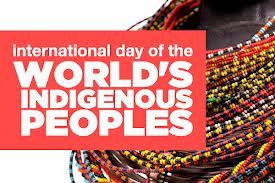
Happy International Indigenous Peoples Day!
#happy international indigenous peoples day#indigenous peoples#international days of stuff#national days of stuff#international day of the world's indigenous peoples#holiday
7 notes
·
View notes
Text
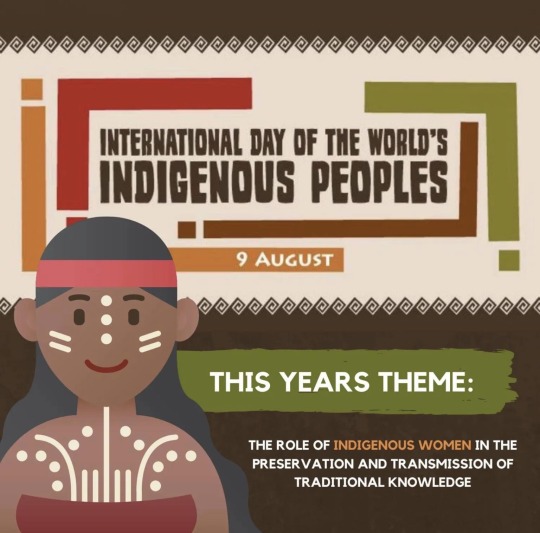

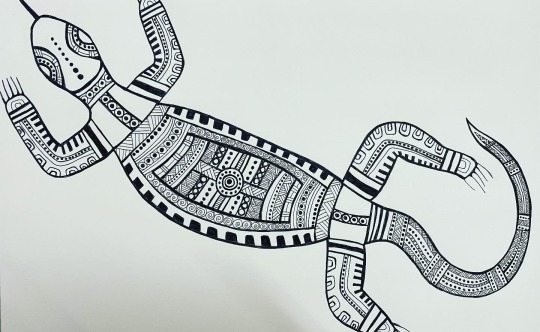
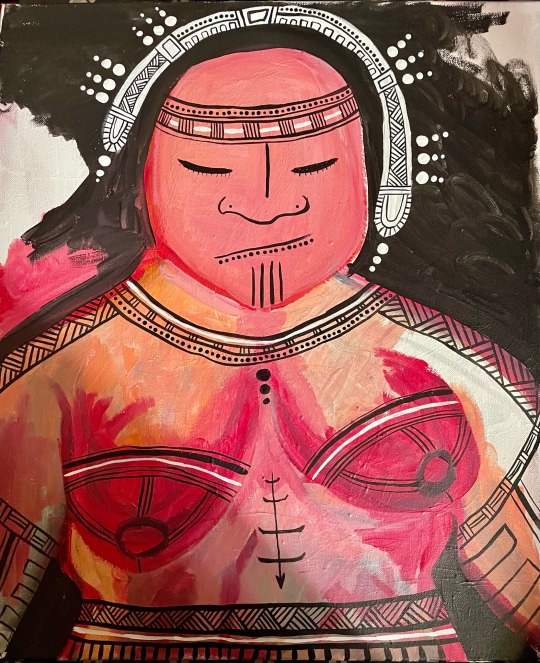
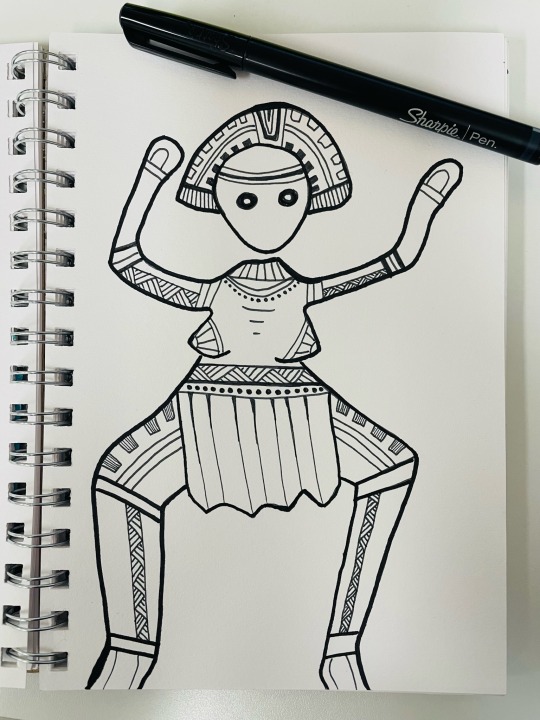
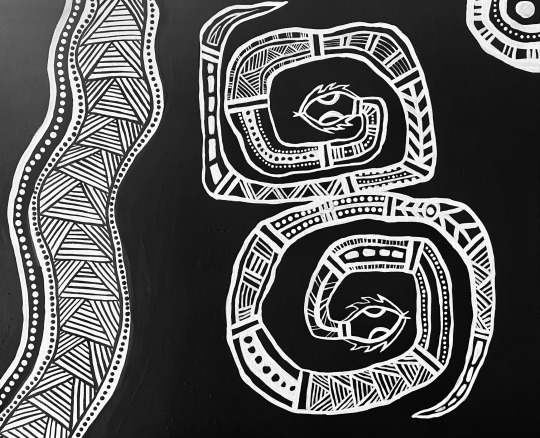

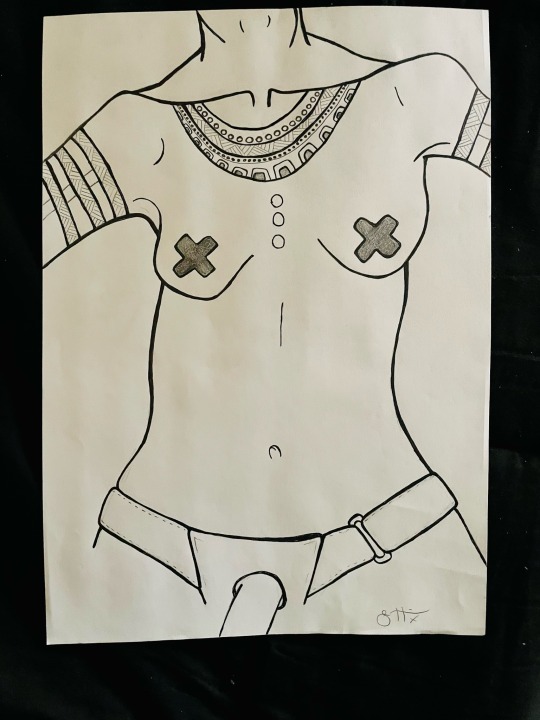
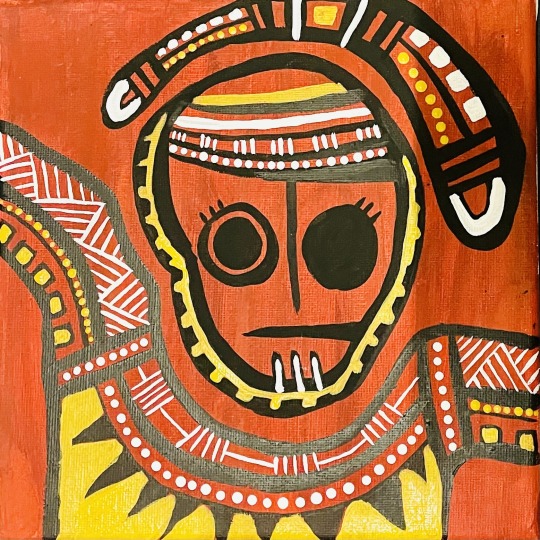
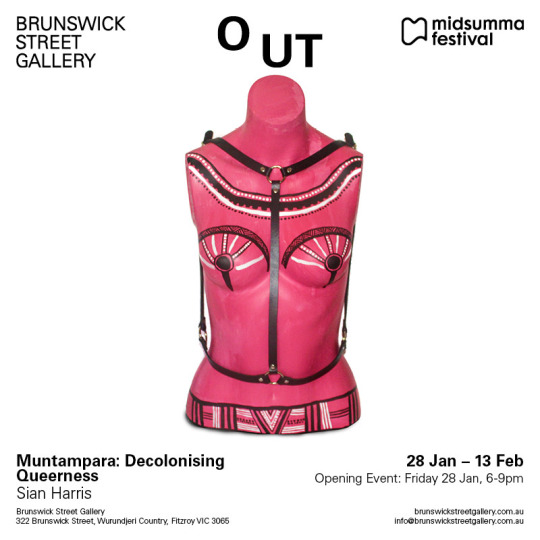
Happy International Day of the World’s Indigenous Peoples.
I’m a Kurnu Paakantyi, Black Queer Artist. Follow me on IG: @sian_h1 I’m looking for more Black Queer Indigenous Artists and Folks to follow back. Above is me and some of my work.
#international day of the world’s indigenous peoples#aboriginal art#queer art#indigenous art#black artist#queer artist
87 notes
·
View notes
Photo
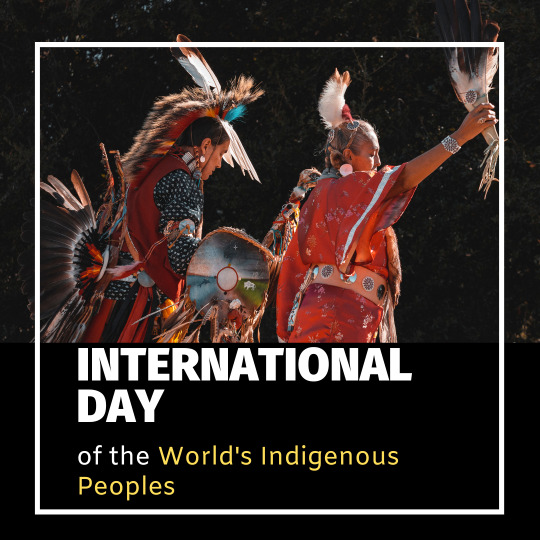
Happy International Day of the World‘s Indigenous Peoples! As we celebrate this special day, discover from Amazon Watch, Cultural Survival, The Indigenous Environmental Network (IEN), and The International Working Group for Indigenous Affairs (IWGIA) how you can defend the rights of Indigenous Peoples ✊!
#international day of the world's indigenous peoples#indigenous#indigenous rights#indigenous people#indigenous peoples#indigenous american#indigenous woman#indigenous women#indigenous lives matter#indigenous pride#indigenous culture#indigenous peoples rights#indigenous peoples day#we are indigenous#native#natives#native pride#native culture#native american#native americans#native women#native american rights#native american culture#native american pride#ndn#first nations#aboriginal#aboriginal american#american indian#land back
6 notes
·
View notes
Photo



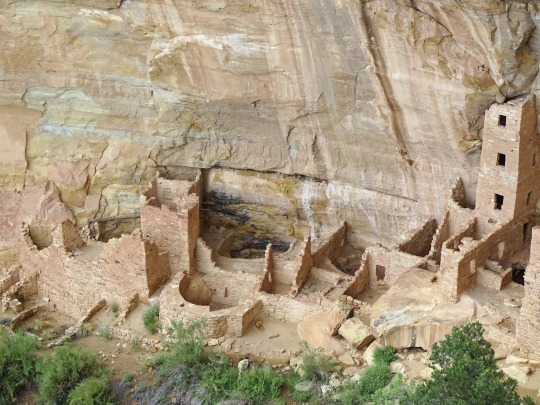
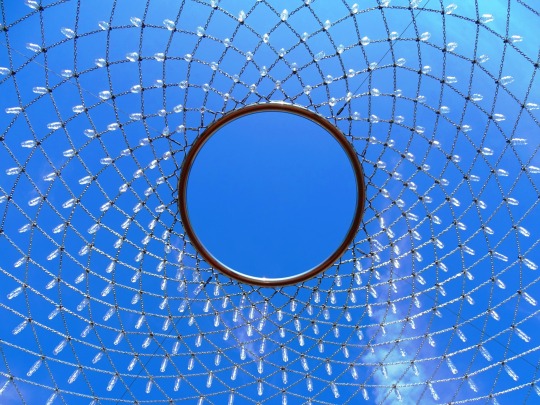


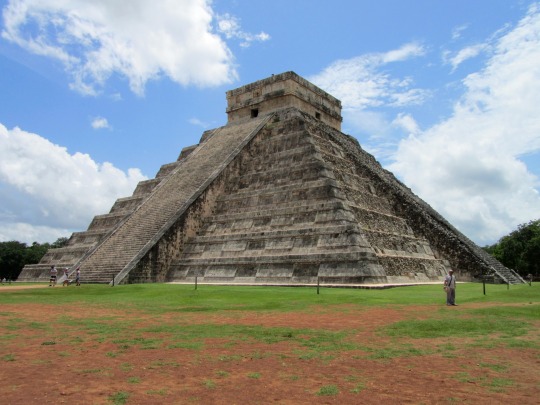


International Day of The World's Indigenous People
The International Day of the World’s Indigenous People on August 9 pays tribute to the indigenous communities of the world. The latest data reveals that there are about 370 to 500 million indigenous people living in 90 countries. These communities are noted to have their own unique set of languages, traditions, cultures, and governing systems. For many indigenous groups, the systems that their ancestors have followed for centuries have stood the test of time by serving them with positive outcomes to date. Many indigenous people’s special bond and connection with nature have also led to the protection of the general environment. However, on the other side, several indigenous communities face difficulties due to a central government’s covert and overt attempts to control their lives. This has led to indigenous people’s rights violations where they would have otherwise ensured peaceful and harmonious lives for them.
History of International Day of The World's Indigenous People
The first International Day of the World’s Indigenous People was officially celebrated in August 1995. The day had been brought into existence when the 49/214 resolution was passed by the U.N. General Assembly on December 23, 1994. August 9 was chosen as the commemorative date because that was when the first meeting of the U.N. Working Group on Indigenous Populations of the Sub-Commission on the Promotion and Protection of Human Rights was held. Every year, the day is honored by governments and organizations holding education forums and conferences to meet and discuss the social issues faced by indigenous groups worldwide. People are also given information on any ongoing and/or upcoming activities and projects that are being undertaken to help the target communities. Every year, the theme changes to shed light on a pressing topic, and the theme for the year 2021 was ‘Leaving no one behind: Indigenous peoples and the call for a new social contract.’
The social contract theme is a call for accountability in the general populations’ interaction with the indigenous communities and their resources. Over the years, many indigenous groups have found themselves to be on a disadvantageous terrain in the face of urban development projects that have destroyed and denigrated their lands and territories. The central governments and builders involved in such projects never sought permission from or even spoke with the indigenous communities before they took the developmental steps. Organizations and agencies like the U.N. and UNESCO have made efforts for constitutional/legislative reforms for dominant indigenous groups. Yet, the efforts must be focussed on bringing everyone together in the cause, leaving none behind.
International Day of The World's Indigenous People timeline
1982 First U.N. Meeting on Indigenous People
The U.N. holds the first meeting on indigenous people by forming the U.N. Working Group on Indigenous Populations of the Sub-Commission on the Promotion and Protection of Human Rights.
1995 International Day of the World’s Indigenous People
The first International Day of the World’s Indigenous People is celebrated by the U.N. General Assembly.
2005 - 2015 Indigenous People’s Decade
The U.N. proclaims 2005 to 2015 to be the ‘Decade of Action and Dignity’ for the indigenous communities.
2019 Indigenous Languages Year
After a startling 2016 report on the danger of more than 2,000 indigenous becoming extinct, the U.N. declares 2019 to be the International Year of Indigenous Languages in order to create awareness.
How To Observe International Day of the World’s Indigenous People
Learn about indigenous groups
Learn an indigenous language
Stand by indigenous groups
History related to indigenous people is always interesting to read and learn about. They have their own sets of beliefs, customs, languages, and cultures. Their daily lifestyles are also often connected with nature, be it animals, trees, certain plants, or lakes/rivers.
The U.N. declared the years 2022 to 2032 the decade for indigenous languages. The goal is to bring to attention the dying languages, since most of them are not taught in schools or are used by the general public. Losing a language is losing an important facet of the history and culture of a people.
The best way to celebrate this day and the rest of the year is by vowing to stand by indigenous groups. The indigenous people have the right to freely choose however they wish to live, much like any other living being on this planet. Protecting their rights also in turn protects your rights in the long run.
5 Interesting Facts About Indigenous People
80% of the world’s biodiversity
4,000 indigenous languages
High poverty rates
Short life spans
Leaders in protecting the environment
Around 80% of the world’s biodiversity is in places where indigenous groups are living.
The 5,000 indigenous communities in the world are credited with having about 4,000 languages.
While the indigenous communities account for only 5% of the world’s population, they make up 15% of the world population that is living in poverty.
Indigenous communities, due to a lack of awareness, have shorter life spans as they die of preventable diseases like malaria and H.I.V.
Studies have shown that the fauna and flora, and biodiversity thrive and flourish where indigenous people reside.
Why International Day of the World’s Indigenous People is Important
It’s a celebration of indigenous people
It’s a celebration of indigenous languages
It’s a celebration of the freedom to live
Indigenous people form an essential and crucial part of not only our planet’s history, but also how human beings have come to make systems to lead fruitful lives. The indigenous people’s cultures, customs, and traditions are interesting to learn about for their uniqueness and for what they teach us about the universe and the bigger picture.
Language, at its core, builds the identity of a people. The involvement of the different phonetics, grammar rules, and formal/informal styles can tell one a lot about where a community has come from, and how their history has shaped them. The same is the case with indigenous languages. The problem lies in their endangerment, and this is why we must strive to preserve them.
The freedom to practice our rights on a piece of land that has shaped our communities for centuries should not be taken away from anyone. The freedom to practice our customs, traditions, and general lifestyles is another important aspect of living a worthwhile life. For these very reasons and many others, we should join indigenous people in their right to live and flourish however they like.
Source
#Native American flute#Monument Valley Navajo Tribal Park#Arizona#USA#Dinosaur National Monument#Diné#Mesa Verde National Park#Colorado#Square Tower House#Jamestown S'Klallam Tribe#Wabanki Canoe#Mexico#Chichén Itzá#The Gather-Ring by Manuel Báez and Charlynne Lafontaine#Ottawa#Cliff Palace#original photography#tourist attraction#landscape#International Day of The World's Indigenous People#9 August#Canada#jingle dance#DayOfTheWorldsIndigenousPeople
5 notes
·
View notes
Text
Technological innovations can empower Indigenous Peoples through mapping and securing customary land.

16.00-17.00 - Panel Discussion entitled'' Technological innovations can empower Indigenous Peoples through mapping and securing customary land."
Keynote speaker: Ramesh Sharma, Ekta Parishad
Moderator: Eva Hershaw, International Land Coalition (ILC/IFAD)
Panelists
Ramesh Sharma, Ekta Parishad
Tania Eulalia Martinez Cruz, Land is Life
Jessica Webb, World Resources Institute
Maria Paula Rizzo, FAO Land Tenure and Indigenous Peoples Specialist
#21 march#international day of forests#Indigenous Peoples#International Land Coalition (ILC/IFAD)#fao forestry#customary land.#FAO Land Tenure and Indigenous Peoples#World Resources Institute#Land is Life#panel discussion#Technological innovations#forests and innovations
0 notes
Text
Statement by Director General of the World Intellectual Property (WIPO, Mr Daren Tang.

It is with deep appreciation and respect that the World Intellectual Property Organization (WIPO) joins today in celebrating the International Day of the World’s Indigenous Peoples.
This year’s theme is - “Indigenous Youth as Agents of Change for Self-determination”.
Indigenous youth play a vital role in preserving and transmitting the living identity and cultural heritage of their communities. At the same time, by drawing on new ideas and perspectives, Indigenous youth bring a fresh outlook to their communities’ practices and activities, finding new ways of bringing their unique heritage to the world.
WIPO supports Indigenous Peoples to make strategic and effective use of intellectual property in support of their community and tradition-based businesses. This includes through our Training, Mentoring and Matchmaking Program for Indigenous women entrepreneurs (the WEP).
The involvement of young Indigenous women in the WEP is significant: more than 20 percent of beneficiaries were under 30 years old at the time of selection. This includes Wakangay
Santi, a 19-year-old woman from the Indigenous Community Kichshuar Amazanga in Ecuador. Wakangay’s experience of being part of a community enterprise, as well as the practical intellectual property skills that she honed through one of the regional editions of the WEP, is an inspiring example of how by supporting our youth to succeed, we support entire communities to succeed as well.
We also reach out directly to Indigenous young people, including through the WIPO Photography Prize for Indigenous Peoples and Local Community Youth. Last year’s competition attracted more than 250 submissions and raised awareness among young participants on how copyright can protect their creativity. We also organized exhibitions of the 30 shortlisted works, as well as a bespoke training program on photography and copyright. I am pleased to report that this year’s edition, themed How We Wear Our Culture
is How we Tell Our Stories, received close to 300 entries, with our final shortlist to be announced in the autumn.
As part of our Covid-19 response package, at last month’s WIPO Assemblies, we launched “Uchi CreActive” a new intellectual property-related project with the Government of Peru that
will support children from the Awajun Community in Urakua, Peru
As well as supporting Indigenous youth through bespoke and impact-driven projects at the national level, the results of WIPO’s normative work through the Intergovernmental Committee on Intellectual Property and Genetic Resources, Traditional Knowledge and Folklore (the IGC) promise to deliver better outcomes for Indigenous Peoples across the generations and around the world.
We welcome the decision of Member States to renew the IGC’s mandate for the coming biennium, as well as the landmark decision reached last year to convene a Diplomatic Conference on intellectual property, genetic resources and associated traditional knowledge.
A successful outcome at the Diplomatic Conference supported by all Member States will not only demonstrate the power of multilateralism, but also show that the global IP framework is
capable of evolving to be more inclusive. We are working hard to support all Member States on the preparatory work ahead of the Diplomatic Conference next year.
Given the nature of this work, it is important for Indigenous Peoples to participate widely and effectively in these discussions, as well as in the work of the IGC. To help make this a reality, we have created the WIPO Voluntary Fund, which recently attracted further contributions
from Germany, Australia, and Mexico. We warmly welcome these donations and encourage others to follow suit.
On this International Day of the World’s Indigenous Peoples, we are proud to reaffirm our commitment to building a balanced and effective intellectual property ecosystem that works for everyone, everywhere. WIPO’s work in support of Indigenous Peoples is an integral part of this mission and we will continue to provide platforms where Indigenous youth can highlight their ideas and the wisdom of their communities in a strategic and respectful manner.
Daren Tang, Director General
World Intellectual Property Organization (WIPO)
#World Intellectual Property Organization (WIPO)#International Day of the World’s Indigenous Peoples#9 august#Indigenous Youth as Agents of Change for Self-determination#indigenous youth#Statements#WIPO
2 notes
·
View notes
Text
Set up a mechanism to promote and defend human rights of Rural workers.

Finally the United Nations Human Rights Council set up a mechanism to promote and defend human rights of peasants, fishers, Rural Workers, Indigenous Peoples, pastoralists, Rural Women and all the rural world. The Working Group will be elected in March. International Day of Rural Women
#Rural Workers#United Nations Human Rights Council#peasants#fishers#Indigenous Peoples#pastoralists#human rights#international Day of Rural Women#15 october
0 notes